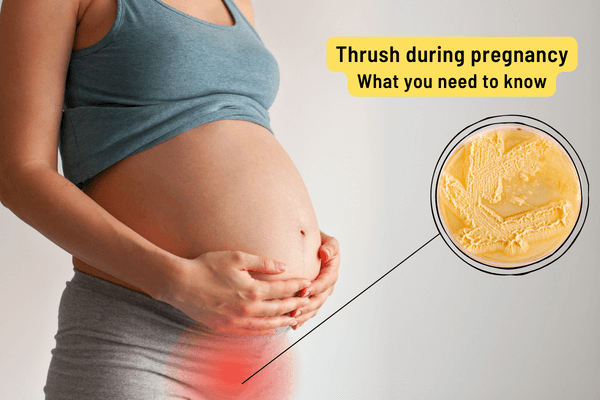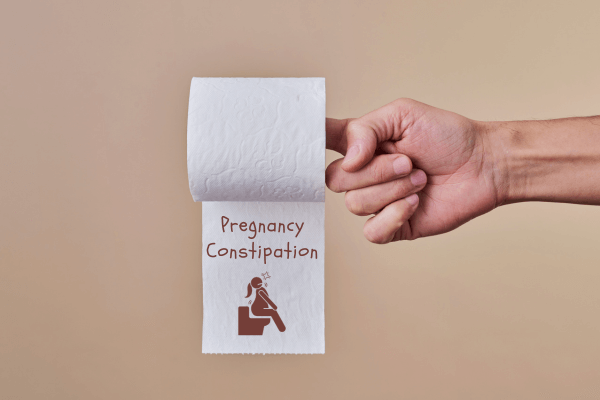Lochia and period bleeding are two important aspects of a woman’s reproductive journey, occurring after childbirth and during menstrual cycles, respectively. These natural processes involve the shedding of the uterine lining and serve vital roles in a woman’s overall health and well-being.
After giving birth, women experience lochia, a postpartum vaginal discharge. Lochia consists of blood, tissue, and bacteria from the uterine lining. It goes through different stages: Lochia rubra, characterized by bright red flow similar to a heavy period; Lochia serosa, appearing pink or brownish; and Lochia alba, a lighter fluid with a white or yellowish color. Lochia lasts for a few weeks, allowing the body to eliminate the remnants of the uterine lining and heal.
Menstrual or Period blood, on the other hand, is a regular occurrence during a woman’s menstrual cycle. It signifies the shedding of the uterine lining when pregnancy does not occur. Menstruation is influenced by hormonal changes throughout the cycle. Period blood ranges in color from bright red to dark brown and varies in consistency. The menstrual cycle typically lasts 21 to 35 days, with menstruation lasting 2 to 7 days.
Understanding lochia and period blood is crucial for women’s health. These experiences are common and natural, reflecting the intricate workings of the female reproductive system. By recognizing the significance of these processes, women can better manage their reproductive health, make informed decisions, and seek appropriate medical guidance when needed. Both lochia and period blood are integral parts of a woman’s journey, illustrating the resilience and complexity of the female body.
Understanding Lochia: A Vital Part of the Postpartum Healing Process
What is Lochia?
Lochia is the vaginal discharge that women experience after giving birth. During the postpartum period, your body naturally undergoes a process of eliminating excess blood and uterine tissue from the uterus, mainly from the decidua lining of the uterus which sustains the placenta. This process is essential for your body to heal after childbirth.
What Does Lochia Look Like?
Lochia goes through various changes in terms of color, consistency, and duration over time.
Lochia rubra (Days 1-3): This is the initial stage of lochia, usually lasting for the first three days after childbirth. Lochia rubra is characterized by a bright red color and a flow similar to a heavy menstrual period. It consists of a mixture of blood, and tissue, from the uterus. During this stage, the discharge may contain small blood clots. You may be soaking 1-4 pads in 24 hours.
Lochia serosa (Days 4-10): After the first few days, the lochia transitions into the serosa stage. Lochia serosa usually lasts from the fourth to the tenth day after childbirth. The discharge becomes thinner and changes in color to pink or brownish. It may still contain small amounts of blood, but the flow typically decreases. You may be soaking 1-2 pads in 24 hours.
Lochia alba (Days 11 and beyond): The last stage of lochia is known as lochia alba, which can last for several weeks after childbirth. Lochia alba signifies the final phase of healing. The discharge becomes lighter, often appearing white or yellowish. The flow further decreases, there may be some spotting and gradually tapers off until it eventually stops.
It’s important to note that the duration and intensity of lochia can vary from woman to woman. Factors such as the type of delivery (vaginal birth or cesarean section), the individual’s healing process, and any complications during childbirth can influence the duration and characteristics of lochia. It’s essential for women to maintain proper hygiene during this time, using sanitary or cloth pads and regularly changing them to prevent infection. In case you experience an increase in bleeding after a week or two postpartum, especially bright red (rubra) then it means you are doing too much work and need to get more rest, slow down.
What women can expect during each stage of lochia:
Lochia rubra (Days 1-3):
During the first stage of lochia, known as lochia rubra, women can expect the following:
- Flow: The flow is typically heavy during this stage, requiring the use of postpartum pads. It may be necessary to change pads frequently to maintain hygiene and comfort.
- Postpartum cramping: Women may experience mild to moderate postpartum cramping during this stage as the uterus contracts and returns to its pre-pregnancy size.
- Lochia rubra typically lasts for the first three days after childbirth, but the duration may vary depending on individual factors.
Lochia serosa (Days 4-10):
During the second stage of lochia, known as lochia serosa, women can expect the following:
- Flow: The flow decreases compared to the previous stage, but it may still be noticeable. Postpartum pads are still necessary, although they may not require changing as frequently.
- Transition to normal discharge: As lochia serosa progresses, the discharge may transition into a more typical vaginal discharge. It may appear yellowish or white, similar to normal cervical mucus.
- Lochia serosa usually lasts from the fourth to the tenth day after childbirth, but the duration may vary.
Lochia alba (Days 11 and beyond):
During the third stage of lochia, known as lochia alba, women can expect the following:
- Flow: The flow further decreases and becomes more minimal compared to the earlier stages. Some women may only have very light spotting or occasional discharge.
- Final phase of healing: Lochia alba signifies the final phase of healing. The uterus continues to recover, and the discharge gradually tapers off until it eventually stops.
- Lochia alba can last for several weeks after childbirth, and the duration may vary.
- See below how Lochia is different from Period Blood.

Managing Lochia: Time, Duration, and Home Care Tips
How Long Does Lochia (Postpartum Bleeding) Last?
The duration of lochia varies from woman to woman. On average, it lasts about four to six weeks after delivery. However, it’s important to remember that every individual’s healing process is unique, and the duration may vary. At Veira Life, we believe in providing you with accurate information to set realistic expectations for your postpartum recovery.
Does Lochia Smell?
It is normal for lochia to have a distinct odor, similar to a mild menstrual odor. However, if you notice a foul or strong odor accompanied by fever, severe pain, or other concerning symptoms, it is important to consult your healthcare provider, as it could be a sign of infection.
What Do I Do to Treat Lochia at Home?
While lochia is a natural part of the postpartum healing process, there are steps you can take to manage it effectively at home. Here are some practical tips:
- Use Sanitary or cloth Pads: Choose absorbent pads designed for postpartum use, as they provide comfort and ensure proper hygiene.
- Avoid Tampons: Doctors recommend waiting for six weeks (until after the 6 to 8-week postnatal checkup) before inserting anything in the vagina. So avoid using tampons for lochia.
- Maintain Good Hygiene: Keeping the genital area clean and dry is crucial during this time. Gently clean with warm water after using the bathroom and change pads frequently.
- Rest and Prioritize Self-Care: Allowing your body ample time to rest and heal is vital. Avoid strenuous activities and listen to your body’s cues for rest.
- Stay Hydrated and Nourished: Proper nutrition and hydration support the healing process. Make sure to consume a balanced diet rich in nutrients and drink plenty of fluids.
- Avoid Sexual Intercourse: Refrain from engaging in sexual activity until you receive approval from your healthcare provider. It is essential to allow your body enough time to heal and reduce the risk of infection.
When Should I Seek Medical Advice?
Lochia:
- Excessive bleeding: If you need to change your pad every hour or less or experience heavy bleeding that doesn’t decrease after the first few days, seek medical attention immediately.
- Foul odor: If the lochia has a strong, unpleasant odor, it could be a sign of infection. Consult a healthcare provider.
- Large blood clots: Passing large blood clots, especially those larger than a golf ball, may indicate an issue and should be discussed with a healthcare professional.
- Signs of infection: Symptoms such as fever, severe pelvic pain, excessive tenderness in the abdomen or uterus, or any signs of infection like chills or flu-like symptoms require immediate medical attention.
- Prolonged Bleeding: If your bleeding persists beyond six weeks or suddenly increases after it has started to decrease, it is advisable to contact your healthcare provider.
Period Blood:
- Excessive bleeding or large blood clots: If you need to change your pad or tampon every hour or less or consistently pass large blood clots, it may be a sign of excessive bleeding or an underlying condition. Seek medical advice in such cases.
- Prolonged or irregular bleeding: If your period lasts longer than 7 days, or you experience irregular bleeding between periods, consult a healthcare provider for evaluation.
- Severe pain: Intense pelvic pain or severe cramping during menstruation that interferes with your daily activities may require medical attention.
- Unusual or concerning symptoms: If you experience unusual or concerning symptoms such as unusually heavy or light periods, sudden changes in menstrual flow, or signs of infection (fever, severe pelvic pain, etc.), it is recommended to seek medical advice.
Partnering with Veira Life for Your Postpartum Journey
As you embark on the postpartum journey and navigate the intricacies of lochia, know that Veira Life is here to support you every step of the way. We are dedicated to providing you with valuable information and resources that empower you to make informed decisions about your pregnancy and postpartum care.
From understanding the stages of lochia to managing postpartum care at home, we are committed to being your trusted companion throughout your postpartum journey. With Veira by your side, you can truly embrace the transformative experience of parenthood and ensure a healthy and joyful pregnancy and postpartum period.
Visit Veira Life for more articles, resources, and tailored support for new parents and expecting mothers. Let’s embark on this beautiful journey together. Your well-being is paramount, reach out to us for personalized guidance and support.
FAQs
Lochia is lighter, more watery and may have a sweetish smell. Lochia’s flow increases with physical exertion. The colour typically ranges from creamy white to red.
Lochia is the vaginal discharge post-childbirth. Initially dark red for up to 3 days, it has a musty odor. Small blood clots, no larger than a plum, are normal.
If your period soaks a pad/tampon hourly for 2+ hours, if you bleed between periods or irregularly, or if there’s any post-menopausal bleeding, seek medical help.
Yes, women experience lochia after a C-section. It’s the body’s way of expelling leftover tissues and blood from pregnancy. The flow usually starts heavy and gradually lightens over time.







